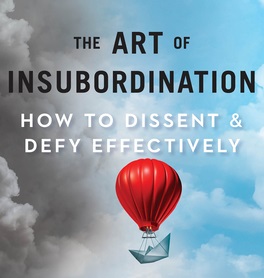Book Reviews: Workplace Culture

CONVERSATIONS ON WORKPLACE culture will continue as long as organizations are interested in being innovative and successful. Lack of positive organizational culture often results in low productivity, creativity, enthusiasm, and fractured teams. Workplace culture that nurtures staff by empowering them to be creative, collaborative, and courageous continues to propel organizations forward.
In the past couple of years, I’ve picked up several books to help inform myself on workplace culture and appreciating different perspectives. These books touch on the topics impacting everyone in and out of the office. They offer different viewpoints on how to respond to the demands of the ever-evolving workplace. In no way are they the magic bullet to any organization’s culture problems, but leveraged with brave leadership and curiosity they may offer some insight.
I Never Thought of It That Way (2022)

By Monica Guzmán
While this book focuses on the larger conversations people are having politically, its application is far beyond those scenarios. Guzmán takes practical approaches to understanding others’ perspectives. Guzmán relies heavily on storytelling to illustrate her concepts, and while other books on the subject like Ezra Klein’s Why We are Polarized (which is also excellent) work so hard to establish credibility and expertise, Guzmán summarizes those thoughts in a few chapters and moves on to the practical content which includes outlining steps to train yourself to keep an open mind to viewpoints completely different than your own. In the workplace (and the board room), it’s essential to have different perspectives that will inform decisions, vision, execution, and strategy. New perspectives begat new ideas. Like minds lead to circular discussions and rarely progress. She quickly assures us all that, “When you’re surrounded by people who reflect the same basic set of perspectives, you’ll find it harder to grasp others.” This book is a must for anyone who’s looking to expand their outlook and appreciate the value disagreement brings to your organization and yourself.
The Art of Insubordination: How to Dissent and Defy Effectively (2022)

By Todd Kashdan
It wasn’t long ago someone said, “Conformity is the jailer of freedom and the enemy of growth.” No one told JFK how many organizations, leaders and managers fear nonconformists. Often, they are perceived as outliers, rabble-rousers, instigators, and saboteurs. Kashdan leans into the discomfort and evidence-based research to not only make the case for why these ‘troublemakers’ need to be supported with the tools to effectively express their ideas, but also why they are vital for your organization’s innovation. Kashdan reminds leaders, “In group settings, stay on the alert for signs of discord and discontents as well as the opposite: pressures on individuals to conform, cohere, cooperate, and put on a cheerful face. You won’t get divergent thinking and unique perspectives unless you modify the culture to allow a wider range of voices to permeate. Support every measure that reduces the tendency of group members to follow the loudest, most popular, most talkative, or most distinguished. Let the best ideas arise from anyone, anywhere.”
The Catalyst (2020)

By Jonah Berger
Berger continues his mission to excite, persuade, and win over everyone with this read. Even though this book has many applications, two areas it works to address are marketing and workplace culture. Understanding the catalyst approach to change is really about identifying challenges and the approaches that mitigate them. From Berger’s perspective, the days are long gone for the I’m the boss and that’s why approach to leading. Instead, it empowers leaders to build support, identify messaging that keeps the audience and purpose in mind, and win people over by learning more about their needs, challenges, and hesitations and then – addressing them. As an example, Berger touts a question: “Trying to change company culture or to get a team to go along with a tough reorganization? Rather than taking a predetermined plan and pushing it on people, catalysts do the opposite. They start by asking questions. Visiting with stakeholders, getting their perspectives, and engaging them in the planning process.” Forget the tense-filled conversations leaving staff with low morale and more quiet quitters, and use these approaches to win them over to become your most valuable asset.
The Burnout Epidemic (2021)

By Jennifer Moss
Burnout isn’t a mythical beast. It is a real thing and Jennifer Moss wants you to realize how much it will cost you and your organization. The book also spends a considerable amount of time discussing how organizations allowed this to happen, which is the part of the book that may be challenging for most leaders. People tend to think of burnout as an individual’s problem, but most organizations have made decisions setting up their workplace to foster a burnout culture. Moss uses the terminology organization hygiene, which she describes items such as salary, work conditions, company policies, supervision, relationships, security, and safety to discuss how these need to be consistently addressed: “These are the essential needs that a company must consistently meet for its employees and, generally, are industry standards. If any are neglected, this is highly detrimental to the employee experience. In addition to hygiene factors…there are also motivation factors. These include recognition of achievements, meaningfully challenging work, a role in decision making, responsibility, and feeling important to the organization. Without these elements, work is not rewarding, and employees can burn out quickly.” Don’t panic, Moss has you covered. Included in the book is a list and description of practical elements your organization should consider in order to turn down the heat.
The Four Agreements (1997)

By Miguel Ruiz
Workplace culture begins with you and what you bring into the office – whatever that may look like to you. So, it’s no surprise this book is always a recommendation and a frequent gift to friends and family since the moment a therapist handed it to me almost 20 years ago. I read it almost every year as a way of recalibrating. It’s easy to feel just as much comfort as discomfort while Ruiz guides you through this journey of a powerful code of conduct that will empower you to find the best version of yourself. The agreements are practical, yet abstract and challenging. They serve as a compass for your perspective on the negative elements that hold you down and back. Despite its spiritual tone at times, its universal messaging is not negated. The Four Agreements are: Be Impeccable With Your Word, Don’t Take Anything Personally, Don’t Make Assumptions, and Always Do Your Best. They sound simple in the same breath that they sound complex. But in the end, they ring true in providing support and insight to our resilience and the situations that challenge us.




